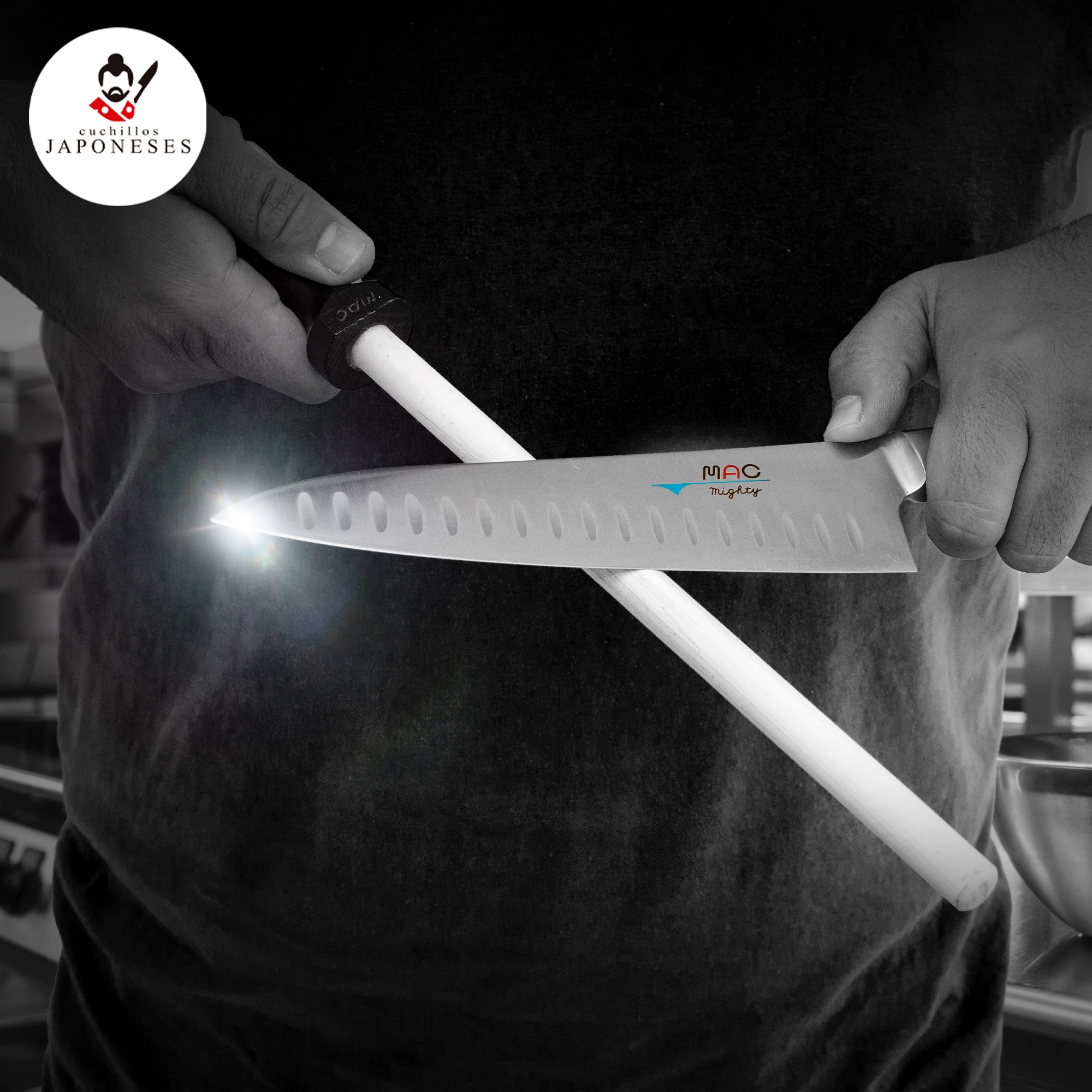
It's no secret that keeping your knives in tip-top condition will require routine maintenance. Most people know that they should sharpen their knives, but what does it really mean to sharpen a knife? And the improvement? If you are a majority who do not know the difference between these two processes, read on.

Sharp versus sharp
Burnishing (shafted or sharpened) and sharpening have a great similarity: they are both ways to keep your knives sharp and effective. But they are not the same, even though the terms are often combined. To understand the difference, you must first understand why knives become dull.
Why do knives become dull


A knife can be dull for one of two reasons:
1) The sharp edge has worn away and / or 2) The edge of the blade is no longer aligned properly. Remember that steel is a metal and metal wears out with use
In other words, a knife that needs to be sharpened is one that no longer cuts well. A knife that needs to be sharpened has misaligned or bent edges, which can happen as often as it is from heavy use.
Sharpened with shank or sharpening
Perfecting with shank or sharpening is simply maintaining an edge that is already sharp. A shaft pushes the edge of the blade into alignment. This can also be called "aligning the burr" (A portion of matter that sticks out at the edges or on the surface of any object.) It is recommended that you check your knife frequently, some choose to sharpen their knives after each use. in this way it remains free of residues and with its edge renewed and aligned.
Sharp
Sharpening, on the other hand, refers to removing material from the edge of the blade, usually by grinding it against a whetstone. If you are sharpening your knife regularly, you shouldn't need to sharpen it more than twice a year, depending on how often you use it.
So what is the difference between sharpening and passing sharpening? Sharpening removes material from the blade to produce a new sharp edge, while sharpening keeps the blade sharp by pushing the edge of the knife to the center.
Sharpening and sharpening tools
This is where things can get confusing. The tools used for sharpening and honing are often used interchangeably.
But most experts agree that a whetstone will be your best option for sharpening knives (in addition to having them professionally sharpened). Sharpening stones help you get a sharp blade without removing too much steel from the blade, this process takes practice and time but is by far the best for maintaining and regulating the sharpness you want to give your knives.
To use a whetstone, hold the edge of the blade against the stone at a 15-degree angle. Apply pressure with the other hand, while guiding the blade through the stone from heel to toe.
To keep the beautifully sharp blade that you just worked so hard to achieve, you'll want to hone your blade after sharpening (and after every use). For this, you will use what is known as a sharpened or astil
To use a shaft, start by holding it vertically with the tip placed on the counter. Slide the blade onto the rod at a 15-degree angle, applying light pressure. Repeat this about half a dozen times, alternating sides.
How to tell if your knife is dull
There are a number of "tests" you can use to check the sharpness of your knife. One of the simplest is known as a "paper test." All you need to do is run a knife across a piece of paper (like printer's), moving from the heel of the knife to the tip. If your knife can't make a clean cut, it might be time to polish or sharpen.
Welcome to Japanese Knives!